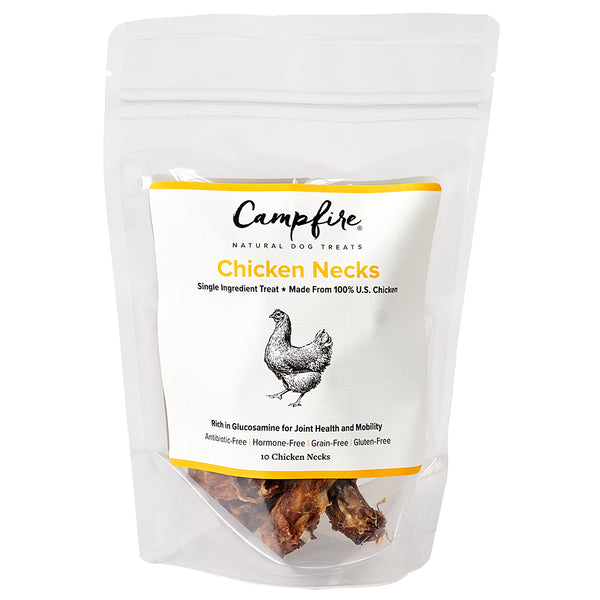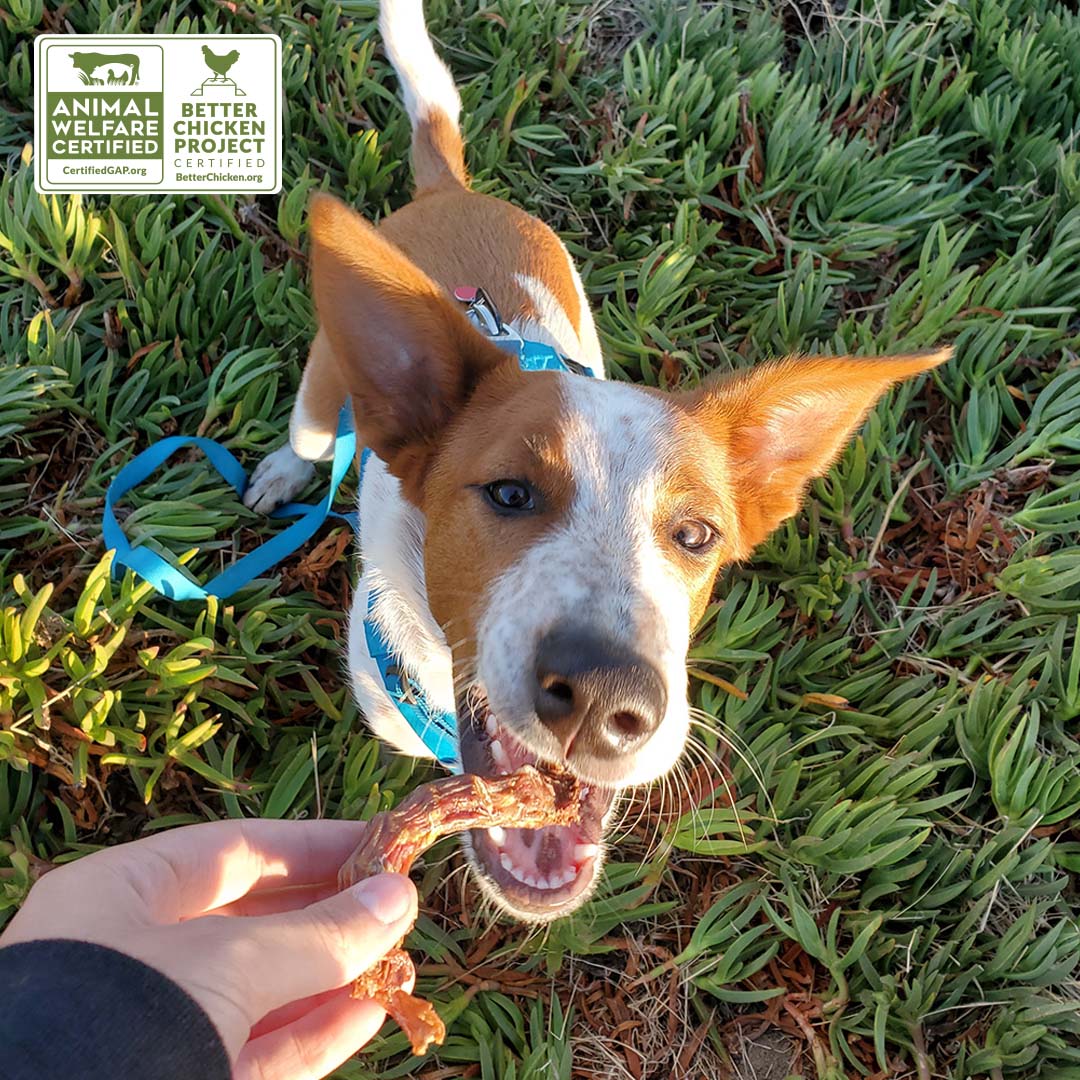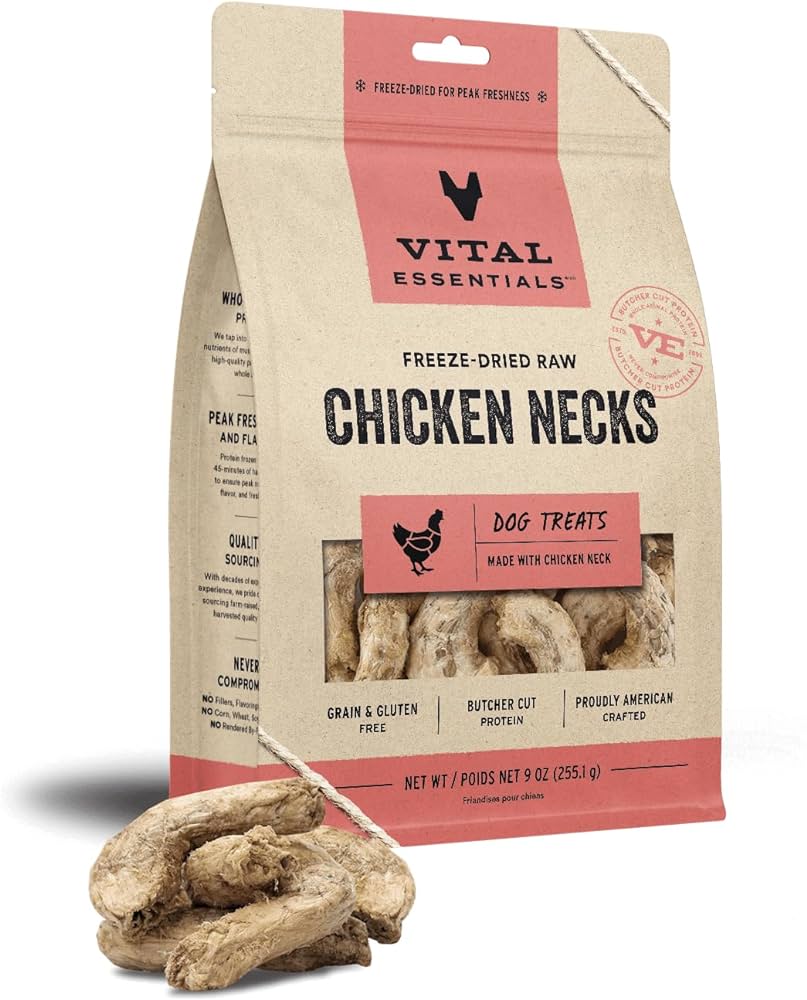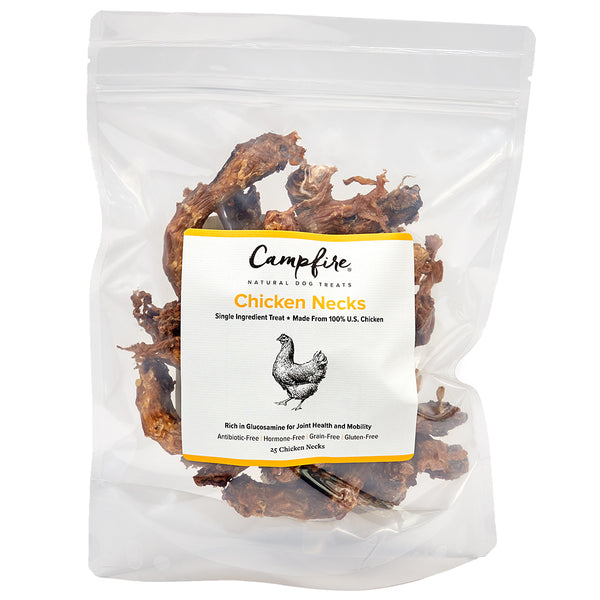Introduction

Chicken necks have become a topic of discussion among dog owners, with opinions divided on whether they should be included in a dog’s diet. Some argue that chicken necks provide numerous benefits, while others express concerns about potential risks. In this article, we will explore both the benefits and risks of feeding chicken necks to dogs, as well as discuss the nutritional value and dental health benefits they offer. It is important for pet owners to weigh these factors carefully and make informed decisions regarding the inclusion of chicken necks in their dog’s diet.
Benefits Of Feeding Chicken Necks To Dogs
Feeding chicken necks to dogs can offer several benefits. Firstly, they are a natural source of protein, which helps support muscle development and overall health. Chicken necks also contain important vitamins and minerals, such as calcium, phosphorus, and magnesium, which contribute to bone strength and dental health. Additionally, the act of chewing chicken necks can promote healthy teeth and gums by reducing tartar and plaque buildup. However, it is important to feed chicken necks in moderation and ensure they are prepared and served safely to minimize any potential risks.
Risks Of Feeding Chicken Necks To Dogs
Feeding chicken necks to dogs is not without its risks. One of the main concerns is the potential for choking, especially for larger dogs who may have a tendency to bite off larger chunks. Additionally, there is conflicting evidence regarding the safety of chicken necks, with one study suggesting a potential link to a higher risk of a nerve damage condition called acute polyradiculoneuritis. Furthermore, there is a risk of bacterial contamination and the transmission of foodborne illnesses. It is important to be aware of these risks and consult with a veterinarian to determine the best feeding options for your dog.
Nutritional Value Of Chicken Necks For Dogs

Chicken necks are packed with nutritional value for dogs. They are a great source of protein, which is essential for muscle development and repair. They also contain important vitamins and minerals, including vitamin B12, iron, and zinc. These nutrients support a healthy immune system and contribute to the overall wellbeing of your dog. Additionally, chicken necks provide a natural source of glucosamine and chondroitin, which are beneficial for joint health. It’s important to note that the nutritional value may vary depending on the quality and origin of the chicken necks.
Protein Content In Chicken Necks
Chicken necks are a rich source of protein for dogs. Protein is essential for the growth and maintenance of muscles, tissues, and organs in dogs. The protein content in chicken necks helps support a strong and healthy body, providing the necessary amino acids for optimal nutrition. With regular consumption, dogs can benefit from the high-quality protein found in chicken necks, which aids in energy production, immune function, and overall wellbeing. It is important to note that the protein content may vary depending on the size and quality of the chicken necks.
Important Vitamins And Minerals Found In Chicken Necks
Chicken necks are not only rich in protein but also contain important vitamins and minerals that contribute to a dog’s overall health. These include vitamin B6, vitamin B12, iron, phosphorus, and choline. Vitamin B6 plays a crucial role in brain development and function, while vitamin B12 supports a healthy nervous system. Iron is essential for carrying oxygen in the blood, phosphorus is necessary for strong bones and teeth, and choline aids in healthy cell membranes and nerve function. Incorporating chicken necks into a dog’s diet can provide these vital nutrients for their well-being.
Dental Health Benefits Of Feeding Chicken Necks To Dogs

Feeding chicken necks to dogs can provide significant dental health benefits. The chewing action of gnawing on chicken necks helps to remove plaque and tartar buildup on their teeth, promoting better oral hygiene. The natural texture of chicken necks acts as a toothbrush, scrubbing away debris and reducing the risk of gum disease. Regularly incorporating chicken necks into your dog’s diet can contribute to healthier teeth and gums, preventing dental issues and promoting overall oral health. Remember to consult with your veterinarian for the best feeding practices and portion sizes.
Chewing Action And Teeth Cleaning
Chewing on chicken necks provides dogs with a natural way to clean their teeth. The gnawing action helps remove plaque and tartar buildup, promoting better oral hygiene. As dogs chew on the textured surface of chicken necks, they act as a toothbrush, scrubbing away debris and reducing the risk of gum disease. This chewing action stimulates saliva production, which can further aid in teeth cleaning. Regularly incorporating chicken necks into a dog’s diet can contribute to healthier teeth and gums, preventing dental issues and promoting overall oral health.
Reduction In Tartar And Plaque Buildup
When dogs chew on chicken necks, the textured surface acts as a natural toothbrush, helping to scrape away plaque and tartar buildup. This reduction in plaque and tartar can significantly improve a dog’s dental health and prevent the development of gum disease. Regular chewing on chicken necks stimulates saliva production, which further aids in cleaning the teeth and reducing the risk of oral issues. By including chicken necks in their diet, pet owners can promote healthier teeth and gums, ensuring that their dogs have a brighter and healthier smile.
Potential Risks Of Feeding Chicken Necks To Dogs

Feeding chicken necks to dogs can come with potential risks that pet owners should be aware of. One of the main risks is the possibility of choking hazards, as the shape and size of chicken necks can easily get lodged in a dog’s airway. Additionally, the high bone and cartilage content in chicken necks can lead to constipation in some dogs. Another concern is the potential for bacterial contamination and foodborne illnesses, as raw chicken necks may contain harmful bacteria such as Salmonella. It is essential to take necessary precautions and consult with a veterinarian before incorporating chicken necks into a dog’s diet.
Choking Hazards
Choking hazards are one of the main risks associated with feeding chicken necks to dogs. The size and shape of chicken necks can make them easy for dogs to choke on, especially for medium to large-sized breeds. The possibility of a piece of chicken neck getting lodged in the airway can lead to a life-threatening situation. To minimize this risk, it is important to supervise your dog while they are eating chicken necks and consider feeding larger necks like turkey necks, which are less likely to cause choking. Always ensure that the chicken necks are thoroughly chewed and broken into smaller pieces before feeding them to your dog.
Bacterial Contamination And Foodborne Illnesses
Bacterial contamination is a significant risk associated with feeding chicken necks to dogs. Raw chicken can be contaminated with harmful bacteria, such as Salmonella and Campylobacter, which can cause foodborne illnesses in both dogs and humans. Handling raw chicken and allowing dogs to consume it increases the risk of infection and the potential for severe side effects. It is essential to handle and prepare chicken necks properly to minimize the risk of bacterial contamination. Thoroughly cooking the chicken necks can help eliminate these harmful bacteria and reduce the risk of foodborne illnesses.
Proper Preparation And Feeding Guide For Chicken Necks

Proper preparation and feeding of chicken necks is crucial to ensure the safety and health of your dog. Here are some guidelines to follow:
- Cooking methods for chicken necks: It is important to cook chicken necks thoroughly to eliminate any harmful bacteria. You can boil, bake, or grill them until they reach an internal temperature of 165°F (74°C). Avoid seasoning the necks with any spices or additives.
- Feeding guidelines and portion sizes: Chicken necks should be fed as a part of a balanced diet, not as the sole source of nutrition. Consult with your veterinarian to determine the appropriate portion size for your dog based on their age, size, and activity level. It is recommended to feed chicken necks as a treat or occasional addition to your dog’s regular diet.
Remember to always supervise your dog while they are eating chicken necks to prevent choking or other hazards.
Cooking Methods For Chicken Necks
Cooking chicken necks thoroughly is essential to ensure the safety of your dog. There are a few different methods you can use to cook chicken necks. One option is to boil them in water until they reach an internal temperature of 165°F (74°C). Another option is to bake them in the oven at the same temperature until they are fully cooked. Some people also choose to grill chicken necks, making sure they are cooked all the way through. It’s important to avoid adding any spices or seasonings to the necks when cooking them for your dog.
Feeding Guidelines And Portion Sizes
When it comes to feeding chicken necks to dogs, it is important to follow some guidelines and consider the appropriate portion sizes. Each dog is unique, so it is best to consult with your veterinarian for personalized advice. However, as a general rule of thumb, you can use the following guidelines:
- Introduce chicken necks gradually: Start by offering small pieces and monitor your dog’s reaction. Gradually increase the size and frequency of the necks based on their tolerance and digestion.
- Portion control: The portion size of chicken necks will vary depending on your dog’s age, size, and overall health. It is recommended to start with about 10% of their daily food intake and adjust as needed.
- Monitor weight and condition: Keep an eye on your dog’s weight and body condition score. If they start to gain weight or become overweight, you may need to reduce the amount of chicken necks offered.
Remember, chicken necks should not make up the entire diet of your dog. It is important to provide a well-balanced diet that includes a variety of protein sources, fruits, vegetables, and grains (if appropriate). Regularly consult with your veterinarian to ensure your dog’s nutritional needs are being met.
Conclusion

In conclusion, feeding chicken necks to dogs can offer a range of benefits, including a high protein content and dental health promotion. However, it is important to be aware of the potential risks, such as choking hazards and bacterial contamination. It is crucial to introduce chicken necks gradually and monitor portion sizes to ensure they fit into a well-balanced diet. Consulting with a veterinarian is recommended to assess individual dog’s needs and consider alternative options. By balancing the benefits and risks, owners can make informed decisions regarding the inclusion of chicken necks in their dog’s diet.
Balancing The Benefits And Risks Of Feeding Chicken Necks To Dogs
When considering feeding chicken necks to dogs, it is important to strike a balance between the benefits and risks. On one hand, chicken necks offer high protein content and can contribute to dental health. However, there are risks such as choking hazards and bacterial contamination. Owners must introduce chicken necks gradually, monitor portion sizes, and ensure they are part of a well-balanced diet. Consulting with a veterinarian is recommended to assess individual dog’s needs and consider alternative options. By taking these precautions, owners can make informed decisions about feeding chicken necks to their pets.
Consultation With Veterinarian And Alternative Options
When considering feeding chicken necks to dogs, it is always a good idea to consult with a veterinarian. They can provide personalized advice based on your dog’s specific needs and health conditions. Additionally, if you are concerned about the potential risks or have any doubts, they can recommend alternative options. There are other safe and healthy alternatives to chicken necks that can provide similar benefits, such as dental chews or specially formulated dog food. Your veterinarian is the best resource for guidance on selecting the right feeding options for your pet.
Frequently Asked Questions About Chicken Necks for Dogs
Q: Can dogs eat chicken necks?
A: Yes, dogs can eat chicken necks. In fact, chicken necks are considered a safe and healthy treat for dogs when given in moderation.
Q: Are chicken necks good for dogs?
A: Yes, chicken necks can be beneficial for dogs. They are a natural source of essential nutrients like protein, vitamins, and minerals. They can also provide dental benefits by helping to clean your dog’s teeth and gums.
Q: How should chicken necks be prepared for dogs?
A: It is best to feed chicken necks raw to dogs, as cooking can remove some of the beneficial nutrients. Always ensure that the chicken necks are fresh and of high quality. Before feeding, you may want to consider cutting them into smaller pieces to prevent choking, especially for smaller dogs or those prone to gulping their food.
Q: How often can I feed chicken necks to my dog?
A: The frequency of feeding chicken necks to your dog depends on their size, age, and overall health. As a general guideline, you can offer chicken necks as a treat or part of a balanced raw diet a few times a week. It is always a good idea to consult with your veterinarian to determine the appropriate amount based on your dog’s specific needs.
Q: Are there any risks associated with feeding chicken necks to dogs?
A: While chicken necks are safe for most dogs, there are a few potential risks to be aware of. Be cautious with dogs prone to gulping their food, as they may swallow large pieces of the neck without proper chewing, which can lead to choking or gastrointestinal blockage. Additionally, dog owners should supervise their pets while enjoying chicken necks to minimize these risks.
Q: Can chicken necks replace regular dog food?
A: No, chicken necks should not replace your dog’s regular balanced diet. While they offer nutritional benefits, they are best served as a treat or occasional addition to your dog’s regular meals. Consult with your veterinarian to determine the best feeding plan for your furry friend.
Q: Can my puppy eat chicken necks?
A: Puppies can consume chicken necks, but it is essential to make sure the pieces are small and easily manageable for their size and age. Puppies have more delicate teeth and jaws, so supervision is crucial to ensure safe consumption.
Remember, every dog is unique, and their dietary needs may vary. It is always best to consult with your veterinarian before introducing new foods to your dog’s diet.

From At-Home Dinner Parties to Family Reunions to Office Parties, we can cater your next Event!